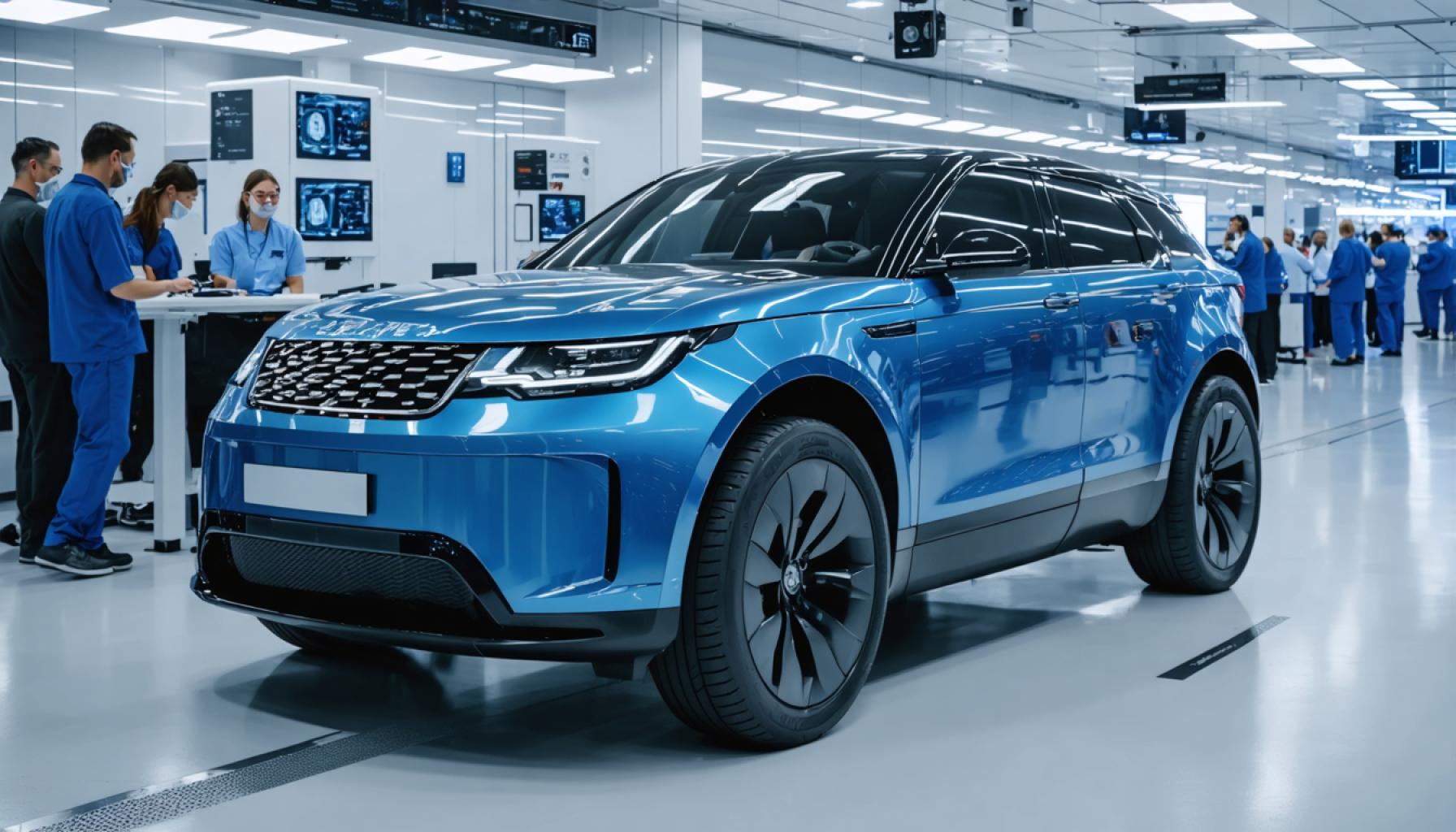- Stanford University’s SLAC-Stanford Battery Center found that EV batteries may last up to one-third longer than previously expected.
- Researchers used real-world driving simulations to assess battery longevity, demonstrating extended endurance beyond industry-standard tests.
- Extended battery life enhances EV reliability, impacting resale value and consumer confidence positively.
- With over 1 million EVs sold in the U.S. in 2023, battery longevity significantly shapes EV market perceptions and future sales.
- Battery health is a critical maintenance focus for EV owners, with services like Recurrent boosting resale values by up to $1,400 by providing real-time battery insights.
- This breakthrough marks a pivotal shift in automotive development, fostering optimism and confidence among EV enthusiasts.
Beneath the sleek exteriors of electric vehicles (EVs), the heartbeat of our automotive future has been pumping with promise, yet clouded by concerns over battery longevity. However, a bright revelation from the labs of Stanford University’s SLAC-Stanford Battery Center is shifting the narrative, unveiling that the lifespan of these critical components might be far longer than once anticipated.
Researchers embarked on an imaginative journey, closely simulating real-world driving rather than relying on the rigid framework of industry-standard tests. Picture this: an EV, like a seasoned marathoner, tirelessly navigating bustling traffic, pausing at shops, darting along freeways, and even luxuriating in the quiet repose of a parking space. This tapestry of everyday battery use paints a more vibrant picture of endurance, showing these batteries can endure up to one-third longer than previous forecasts suggested.
For EV owners, these findings cannot be understated. The data translates to not just longer drives but also more financially rewarding ones. With EV sales accelerating – over 1 million sold in the U.S. alone in 2023 – this endurance revolution holds the key to reshaping perceptions of EV reliability and resale potential.
Upon buying an EV, maintenance narratives transform. Gone are the tales of oil changes, replaced by the saga of battery health. As consumer interest peaks, services like Recurrent have become pivotal. By offering real-time battery metrics, Recurrent helps sellers showcase the stealthy endurance of their EVs, promising higher resale values, often sweetening the deal by $1,400 more than those without such insights.
This revelation is more than just a scientific milestone; it is an optimistic symphony for all EV aficionados. The enduring beat of their batteries stands ready to reassure, so they can drive into the future with confidence.
New Discovery from Stanford: Electric Vehicle Battery Longevity Exceeds Expectations
Understanding the Enhanced Longevity of EV Batteries
Recent findings from Stanford University’s SLAC-Stanford Battery Center reveal that electric vehicle (EV) batteries can last up to one-third longer than previously estimated, significantly boosting their appeal and value. This dramatic improvement stems from their innovative approach of simulating real-world driving conditions rather than relying purely on standardized tests. Such conditions include the typical ebbs and flows of traffic, stop-and-go city driving, highway cruising, and periods of inactivity, which more accurately reflect everyday use.
Insights & Predictions
– EV Market Growth: With over 1 million EVs sold in the U.S. alone in 2023, the enhanced battery life projection bodes well for a more rapid transition to electric motoring. As concerns over battery longevity are mitigated, consumer confidence is expected to rise, driving further sales.
– Consumer Trust and Value Retention: Batteries accounting for up to one-third greater longevity translate into more significant savings and resale value. Therefore, EVs are likely to retain value better over time compared to earlier projections. This affirmation is crucial for potential buyers who weigh long-term savings against initial purchase costs.
– Environmental Implications: Extended battery life also means a reduction in waste and the need for frequent battery production, aligning well with environmental sustainability goals.
New Trends and Technologies
– Battery Health Monitoring: With third-party services like Recurrent offering real-time battery metrics, sellers and buyers now have concrete data showcasing battery health, resulting in potential increased resale values by as much as $1,400. Such services enhance transparency and trust between buyers and sellers.
– Advancements in Battery Technology: Innovations, such as solid-state batteries and improvements in lithium-ion technology, continue to promise even more considerable efficiency gains and longer lifecycle expectations for EV batteries.
Pros and Cons of EV Longevity
Pros:
– Extended Range and Savings: Longer battery life means reduced need for replacements, saving costs in the long run.
– Higher Resale Value: Vehicles with verified long-lasting batteries command better prices in the resale market.
– Reduced Environmental Impact: Decreased demand for battery replacements aids in lowering the impact on the environment.
Cons:
– Initial Cost: EVs may still be more costly upfront compared to traditional vehicles, although this is tempered by long-term savings.
– Battery Dependent: Despite the improvements, if a battery fails or defects appear, replacement costs can be high.
Actionable Recommendations
1. Consider Longevity in Purchase Decisions: When buying an EV, focus on models with proven longevity metrics and consider the added value of verified battery health through third-party monitoring services.
2. Stay Updated on Technological Advancements: Keep an eye on emerging battery technologies that may offer even better performance and lifespan, influencing future purchase decisions.
3. Optimize Battery Health: Adopt practices such as avoiding frequent full discharges and maintaining a moderate charge cycle to further stretch the battery’s life.
Conclusion
With ongoing research and technological advancements, the future of electric vehicles looks encouraging, both for individual owners and broader environmental sustainability. As the industry continues to evolve, consider joining dedicated forums or subscribing to updates from resources such as the Society of Automotive Engineers (SAE) to stay informed about the latest trends and technologies driving the EV market.
